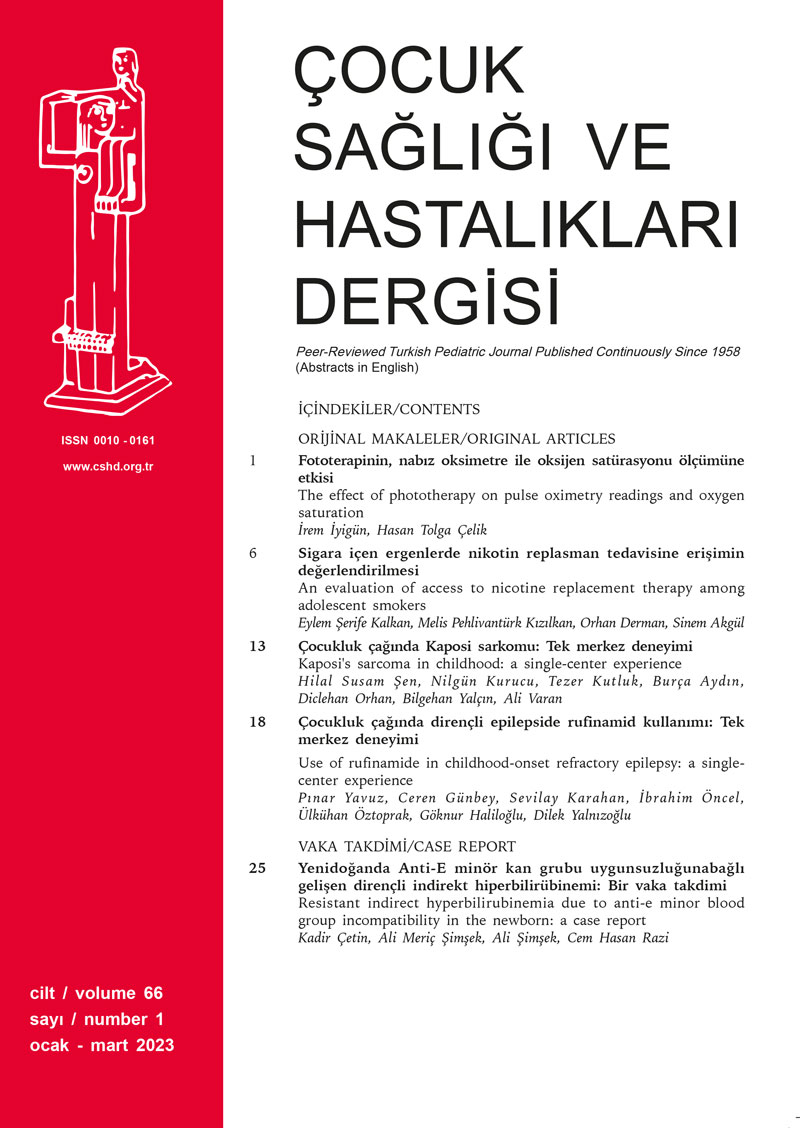Abstract
The treatment of refractory childhood epilepsy is difficult to manage with relatively limited medication options. The aim of our study was to evaluate the use and side effects of rufinamide, a new generation antiseizure medication, in the treatment of refractory childhood epilepsy. Seventy-nine (43 M/ 36 F) patients were included in the study, with a median age of 98.6 (1.5-208) months. The most common seizure types were tonic (n=40, 31.3%), tonicclonic (n=15, 11.7 %) and myoclonic (n=15, 11.7%). Seizures were daily in 89.9% (71) of the patients. The most common etiological factors were structural (n=39, 49.4%) and genetic (n=25, 31.6%). The median follow-up duration was 28.5 (1.5-98.5) months. Twenty-seven (34.2%) patients had ≥50% seizure reduction and 3 (3.8%) were seizure free. During follow-up, 8 (10.1%) patients experienced adverse events including rash (n=2), status epilepticus (n=2), sedation (n=2), vomiting (n=2), thrombocytopenia and eudema (n=1), anorexia (n=1). In patients under 4 years of age, 61.5% experienced ≥50% seizure reduction and 7.7% were seizure free. Rufinamide is an effective antiseizure medication in the treatment of refractory epilepsy from the age of one year and requires careful monitoring for side effects.
Keywords: rufinamide, refractory epilepsy, child, adolescent








